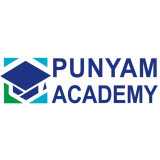This informal CPD article on Developing ISO 29001 Documentation for Petroleum and Petrochemical Industries was provided by Punyam Academy, an industry leader in training of international compliance standards.
The International Organization for Standardization (ISO) published the ISO 29001 standard in May 2020, specifically for the quality management systems of the petroleum, petrochemical and natural gas industries. Now an ISO 29001 Quality Management System (QMS) is considered as a must for management of supply chain risks and opportunities in the petroleum, petrochemical and natural gas industries.
ISO 29001 QMS is basically built upon ISO 9001:2015 QMS. It addresses ISO 9001:2015 QMS requirements along with some specific requirements for product and service supply organizations in the petroleum, petrochemical and natural gas sector. As ISO 29001: 2020 is a supplementary standard to ISO 9001:2015, the organizations that have already implemented ISO 9001:2015 QMS will require relatively less effort, time and investment for documentation and implementation of ISO 29001 QMS. This is because they will be required to only update their documentation in accordance with additional requirements of ISO 29001:2020 and implement afresh only these additional requirements.
However, the organizations who have not implemented ISO 9001:2015 (generally new organizations in petroleum, petrochemical and natural gas industries) will need to begin from scratch. This means that they will first need to create a QMS documentation structure. The amount of documentation should support an efficient quality management system without creating a paper bureaucracy, however it should meet the requirements of the organization and its interested parties, including its personnel, customers and regulatory and statutory bodies.
ISO 29001:2020 Documentation Structure
The ISO 29001:2020 standard requires the organization’s QMS to include documented information required by this standard as well as documented information determined by the organization as being necessary for the effectiveness of the QMS. The term ‘Documented information’ refers to both “documents” and “records”. It includes information and its supporting medium. The ISO 29001: 2020 standard does not require any specific form of documentation or many procedures. It suggests some documented information only. However, for establishing and implementing a good quality management system and ISO 29001 certification, organizations should have a four- tier documentation structure as mentioned below:
Tier 1 - Quality Manual
Quality manual gives macro level details of how the system is implemented for all ISO 29001: 2020 requirements. It states the Quality Policy and describes the entire QMS of an organization in petroleum, petrochemical and natural gas sector. Though Quality Manual is not a requirement of the ISO 29001 standard, this is considered as a main document used in drawing up and implementing the QMS in the organization. Your quality manual should describe the totality of the quality management system operated by your organization with regard to all its products/services.
Tier 2 - QMS Procedures and Process Approach
These are considered as the core of QMS documentation. The procedures and process approach support the operation of processes to establish confidence in the system. Quality procedures must describe the methods of meeting requirements of relevant clauses of ISO 29001:2015.
Tier 3 - Work Instructions, Operating Procedures, Exhibits, etc.
These are practical documents which deal with shop-floor level of activities. Their purpose is to clearly direct the operator as to what has to be done and what standard of workmanship is required. The instructions must therefore clearly identify what has to be done; the correct sequence of activities; any special, environmental conditions, e.g. temperature, humidity cleanliness etc. and reference to standards or code of practice which must be complied with.
Work instructions may be written documents, drawings, photographs, computer menu options, machine care / operation, work production documentation, etc.
Tier 4 - Forms, Registers, Records
All these are supporting documents used by the organization to record information for different procedures followed. This type of documentation serves to demonstrate that the QMS is operating efficiently to produce the products or services in accordance with specified requirements of the QMS. Records are required to be retained in a QMS.
ISO 29001:2020 QMS documentation may differ from one organization to other, due to different size of the organization and type of its activities, processes, products and services, complexity of processes and their interactions and training and competence of personnel.
Developing ISO 29001 Documentation
ISO 29001 QMS documented information should be created and updated, when necessary, in such a manner that it is suitable and adequate. When creating and updating documented information, ensure its identification and description is appropriate. This means that every documented information must have an appropriate title, date, author, document reference number and revision number. As review and approval of documented information is vital for its suitability and adequacy, it must also indicate approval of the documented information by an authorized person.
ISO 29001 QMS documented information must have a clear and approved format (language, software version, graphics) and media (paper, electronic/digital). You must also ensure that when anyone uses these documents or records, he/she finds them fit for the purpose. This is really important so that ISO 29001 QMS documented information is created and used properly and the changes/updates that have been incorporated don’t get lost when someone else doesn’t understand them or removes them.
In addition to the aforementioned four-tier documentation structure, organizations should prepare an audit checklist based on the requirements of the ISO 29001:2015 standard. Depending on the organization structure, department wise audit checklist can also be prepared. ISO 29001 audit checklists are useful for both QMS implementation and internal audit of the implemented system for its effectiveness. It is also useful in preparing for a ISO 29001 certification audit or any third-party audit.
We hope this article was helpful. For more information from Punyam Academy, please visit their CPD Member Directory page. Alternatively please visit the CPD Industry Hubs for more CPD articles, courses and events relevant to your Continuing Professional Development requirements.













